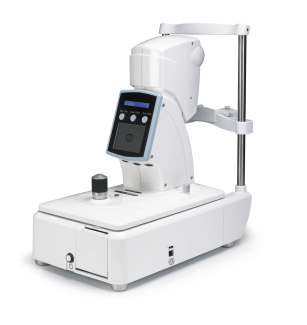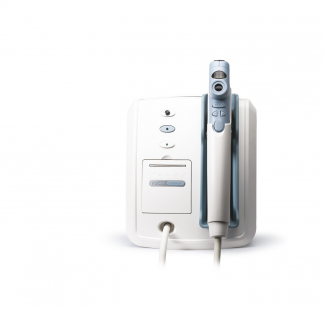Tonometry is commonly used to measure a patient’s intraocular pressure (IOP). Given the link between fluid pressure inside the eye and the onset of glaucoma, tonometers have become the principle test for glaucoma diagnosis.
Glaucoma examinations are, therefore, a vital part of ocular healthcare. They can help determine a patient’s risk of developing a range of eye diseases which can lead to eye pain, mid-dilated pupils, redness of the eye, nausea, damage to the optic nerve and eventually vision loss. A tonometer will identify four main types of glaucoma: primary open angle glaucoma, primary angle closure glaucoma, secondary glaucoma, developmental glaucoma (congenital glaucoma). These range from chronic to acute forms of glaucoma development.
Our applanation tonometers are manufactured by Keeler. They are highly distinguished as the “true leaders” in the tonometry field. Their technological prowess provides optometrists with highly accurate and reliable IOP measurements.
Our range of standard and digital tonometers fall into two main categories; contact tonometers and non-contact tonometers (pneumotonometry).
Our range of Keeler non-contact tonometers are ideal for non-invasive screenings as they use “puff air” technology to measure eye pressure. This is why they are commonly referred to as the "puff test”. Known as pneumotonometry, the air flattens the cornea without any discomfort to the patient. Their only reflex will be to blink.
Non-contact applanation tonometers offer a simple way to check for high IOP and are ideal for busy clinical environments as they eliminate the need for ophthalmologists and optometrists to use drops to numb the eye. This is particularly helpful when testing children.
Patients will simply rest their chin on a padded support and will look straight into the machine. After a puff of air is blown into the eye, the non-contact tonometer records the IOP. It does this by recording the change in the light reflected off the cornea as it indents from the puff of air.







